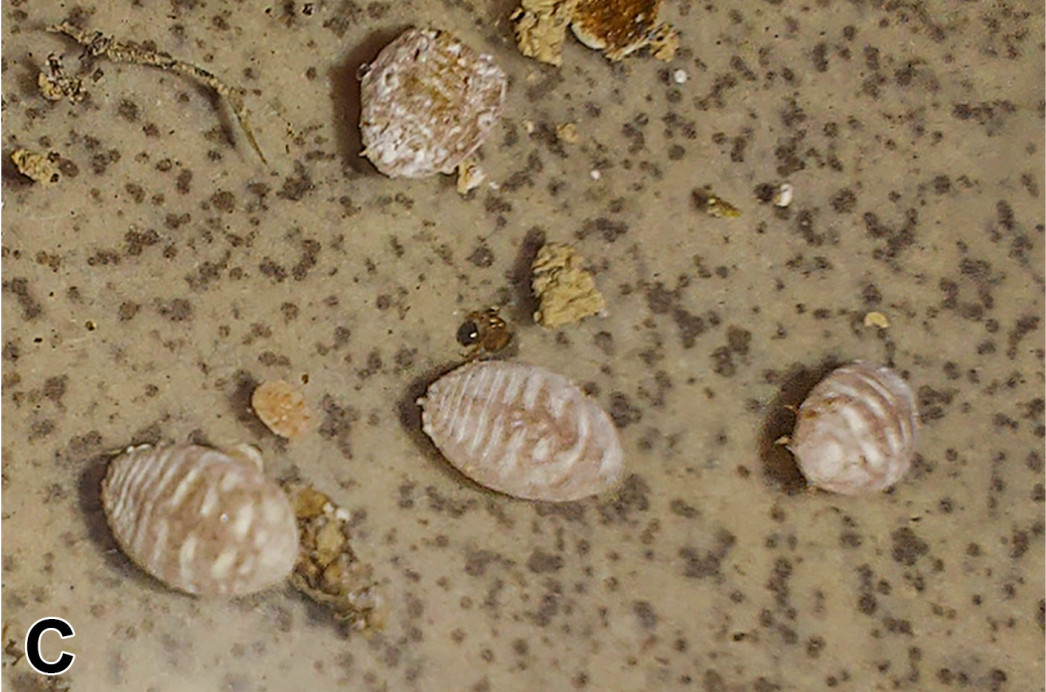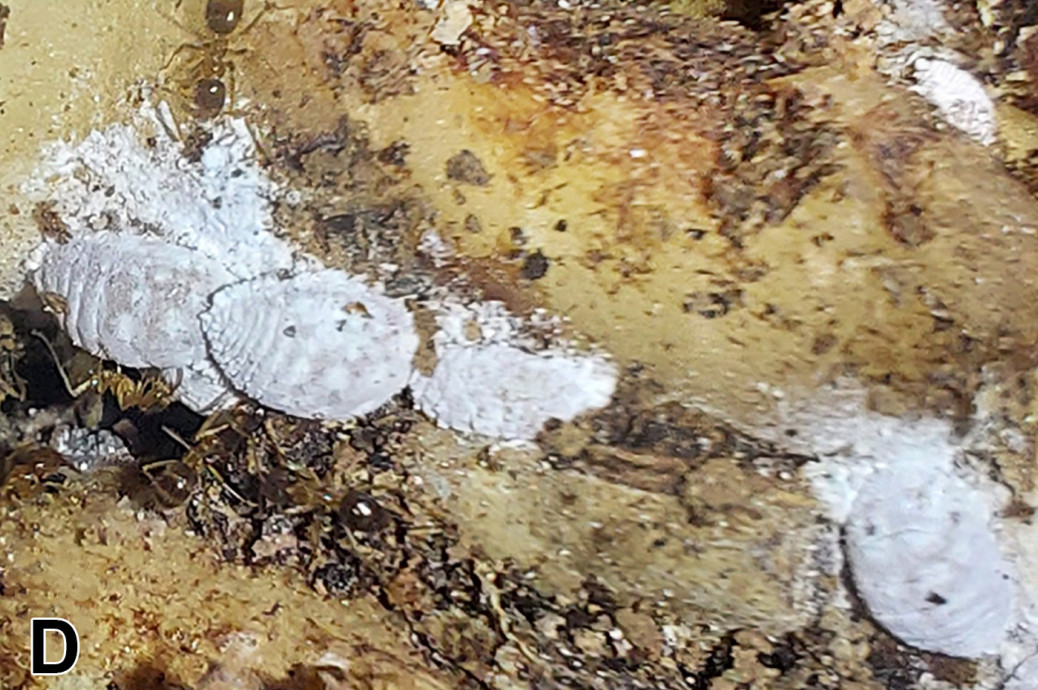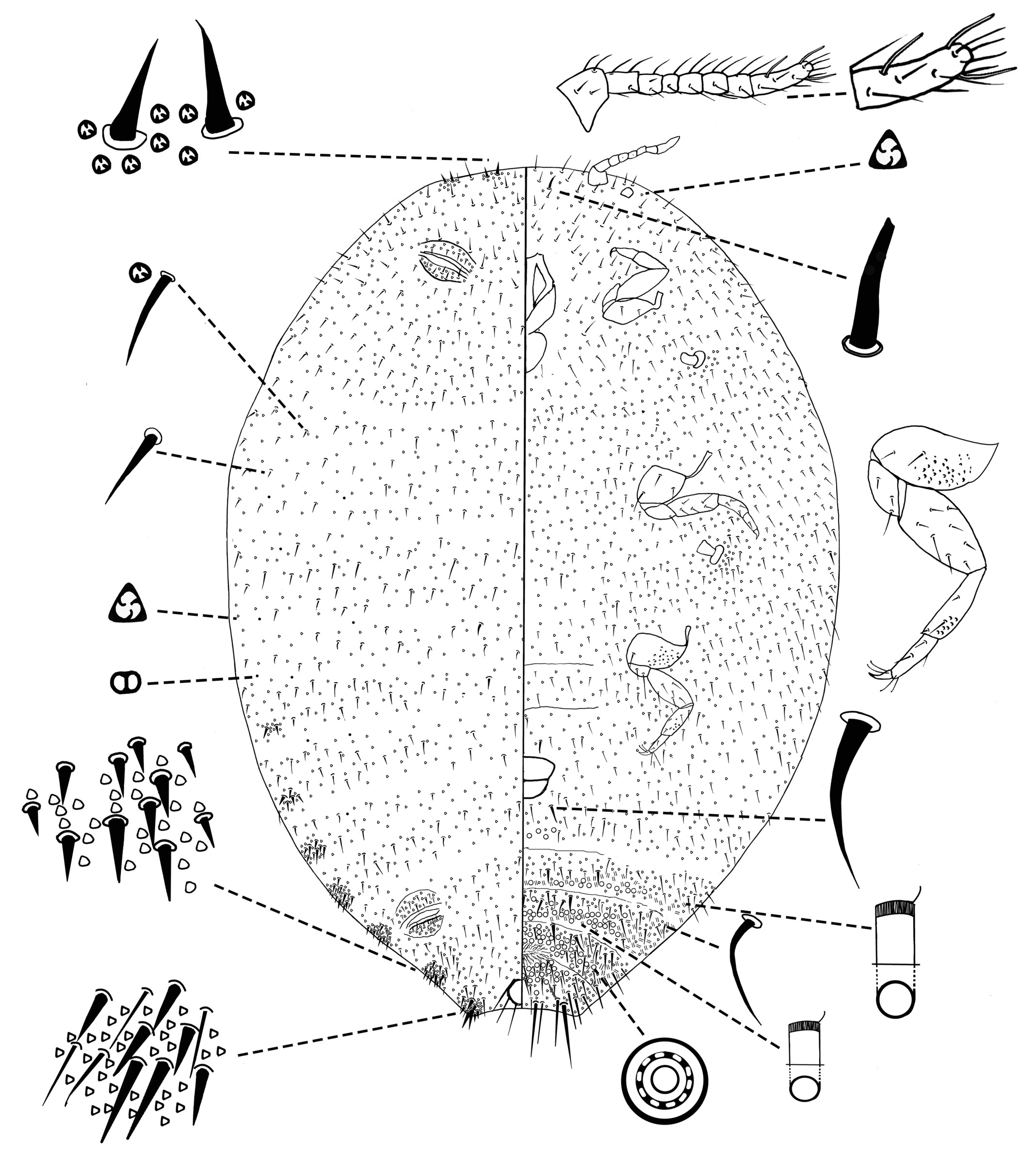Valid Names Results
Formicococcus phoenicis Moghaddam & Zarghami, 2024 (Pseudococcidae: Formicococcus)Nomenclatural History
- Formicococcus phoenicis Moghaddam & Zarghami 2024: 773. Type data: IRAN: KHOUZESTAN, Ahvaz, on root of Phoenix dactylifera, 8/21/2023, by S. Zarghami. Holotype, female, by original designation Type depository: Tehran: Hayk Mirzayans Insects Museum, Tehran, Iran; accepted valid name Notes: Paratypes: same data as for holotype: 1 adult female on holotype slide; 4 adult females mounted singly on slides; and 2 adult females mounted together on one slide (HMIM) Illustr.
Common Names
Ecological Associates
Hosts:
Families: 1 | Genera: 1
- Arecaceae
- Phoenix dactylifera | MoghadZa2024
Geographic Distribution
Countries: 1
- Iran | MoghadZa2024
Keys
Remarks
- Systematics: Formicococcus phoenicis sp. nov. is most similar to F. tripurensis Williams, 2004, in sharing the following characteristics: (i) circulus present; (ii) lacking oral collar tubular ducts on head and thorax; (iii) posterior abdominal segments VI and VII with marginal groups of oral collar tubular ducts; and (iv) stiff dorsal setae. However, F. phoenicis differs from the latter by the following features (characters states of F. tripurenis given in parentheses): (i) cerarii numbering 9 or 10 pairs (15 or 16 pairs); (ii) anal lobe cerarii each containing 7–9 conical setae and 4 or 5 auxiliary setae (3 conical setae and 0 auxiliary setae); (iii) apical, cisanal and obanal setae flagellate, long (all thick and relatively short); (iv) posterior abdominal segments with some medial ventral setae apparently wide, and blunt or pointed at the apex (medial setae on posterior abdominal segments usually thicker at bases than at apices). Formicococcus phoenicis is also similar to F. robustus (Ezzat & McConnel) in having: (i) circulus present; (ii) anal lobe cerarii each with more than 2 cerarian setae and auxiliary setae; and (iii) ventral oral collar tubular ducts absent from head and thorax. However, F. phoenicis differs from the latter by having (character states of F. robustus given in parentheses): (i) cerarii numbering 7 pairs on abdomen and only 2 on head (normally 18 pairs); (ii) ventral multilocular disc-pores present on abdominal segments IV–IX (V–IX); and (iii) posterior abdominal segments with some ventral setae thicker, and a few medial setae distorted and widening at apex (all setae flagellate) (Moghaddam & Zarghami, 2024).
- Structure: Unmounted live specimens: adult female broadly oval, grey to red, dorsum of body lightly dusted with white mealy wax secretion; posterior end with marginal white wax filaments very slightly developed (Moghaddam & Zarghami, 2024).
- Biology: Live specimens were found on the roots of date palms.
- General Remarks: See Moghaddam & Zarghami (2024) for detailed description of slide-mounted specimens.
Illustrations
Citations
- MoghadZa2024: description, diagnosis, distribution, host, illustration, taxonomy, 773





